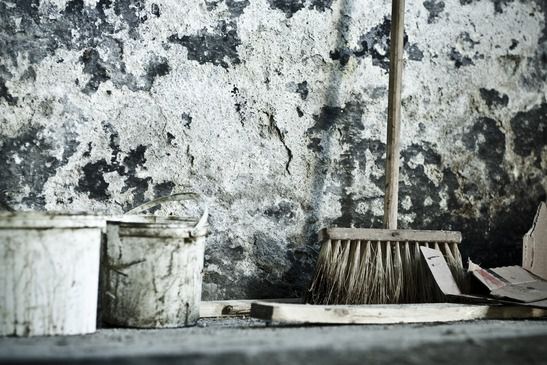Molds are developed as spores enter the home and attach themselves to an area that has experienced great amount of moisture. This is why it is imperative to maintain your plumbing correctly. Flooded basements should also be taken seriously as black mold could take hold in the drywall and other materials. What are some common side effects to mold being within the home?
1. Allergies – As sensitivity in mold varies from person to person, most will experience problems similar to allergic reactions to pollen, grass or dust. These can be simple enough from running noses and sneezing. However, more serious allergic reactions could be experienced such as headaches, nausea and inflammation within the lungs. Unfortunately, it is difficult to ascertain what your experience will be as each person’s immunities can prevent the onset of such experiences.
2. Rashes – In some cases, exposure to mold spores can cause rashes in an individual. Again, this should be viewed as a “per case” incident since individual body types could be more resilient to mold spores than others.
3. Compromised Immunities – Those who suffer from an immunodeficiency such as HIV or AIDS could experience more severe symptoms when faced with molds. This could also include those who have had recent surgery or are otherwise predisposed with a weakened immunity system due to illness.
Removal of Molds
1. Protecting Yourself – Wearing a mask and goggles is always prudent when doing any kind of tearing-out project for the home. Even if your home doesn’t have a single fungi in the area, dust can cause similar symptoms. A breathing mask and goggles will prevent spores from entering your body from those access points.
2. Thrown Away – Materials that are porous or otherwise can contain the mold, such as carpet and drywall, will need to be removed from the premises. While a thorough cleaning can remove the mold from most surfaces, even the smallest amounts of leftover mold can cause a problem if not detected. Drywall and insulation should be considered as contaminated and removed immediately.
3. Chemicals – Various people have had success using a variety of materials to use in the home in order to kill molds. They can range from toxic absolute killing systems to organic methods of successfully removing these intruders. Some of these components include:
- Hydrogen Peroxide
- Tea Tree Oil
- Grapefruit Seed Extract
- Baking Soda
- Vinegar
- Borax
Bleach and borax should be used sparingly and mixed using approximately one cup of the material to one gallon of water before being applied. Transferring these materials to a spray bottle arms you with a mold killing solution.Although bleach can have a profound impact on clean-ups of various kinds, it can also be ineffective if used incorrectly. Bleach is best used on flat surfaces that are not porous in nature. Wood, unfortunately, is not one of those materials. Some organizations have gone on to state that using bleach on wood could be adding to the problem as the water-base of the cleaning solution can provide nourishment if trapped within the porous regions of various materials.
4. Thorough Cleaning – After the tear-out of drywall and carpet, including the padding if any, use your chemical composition of choice above and clean the affected area thoroughly by scrubbing. Once the area has been scrubbed down, do not rinse away your cleaning solution. Many of the above components, especially borax, act as a fungicide that can prevent future manifestations of the mold.
Is it Worth Risking Your Health?
Mold of any kind has the capacity to harm you in a variety of ways. For most people, this depends upon the extent of the allergic reaction and the type of mold that they are subjected to. It is always better to prepare yourself for the worst case scenario, even though the strain may be harmless.
Protect Yourself – Always wear protective gear when cleaning molds. Breathing masks, gloves and even eye protection can save yourself from experiencing side effects later on. Keeping yourself and your family protected should be your number one priority.
Don’t Underestimate Contamination – For large areas of contamination, it is always better to have a professional confront the problem. The EPA suggests that contaminated areas that are greater than 10 square feet should be dealt with by an experienced person who knows how to treat the material.
The sight of black mold can cause any homeowner to panic. As long as you take safety precautions, you can avoid contracting a fungal infection. The key is to keep the area dry and starve the fungi from its main component – moisture. While some do not believe in drywall tear-outs, remember that if you see it on one side, there’s a good chance it’s on the other side as well. This is especially true after severe floods.
This post is contributed by Linda Bailey from housekeeping.org. She is a Texas-based writer who loves to write on the topics of housekeeping, green living, home décor, and more. She welcomes your comments which can be sent to [email protected]


2 comments
I just came onto your post and found it quite interesting. I am associated with Mold Removal for Removing the moisture and water in your home .Thanks again for writing such a good post.
Explore more about Mold cleaning chemicals
It is not time to panic but you should consider to pick up professional to do the “hard work”? Black mold is one of the top causes of asthma, especially for persons who are predisposed to allergies.